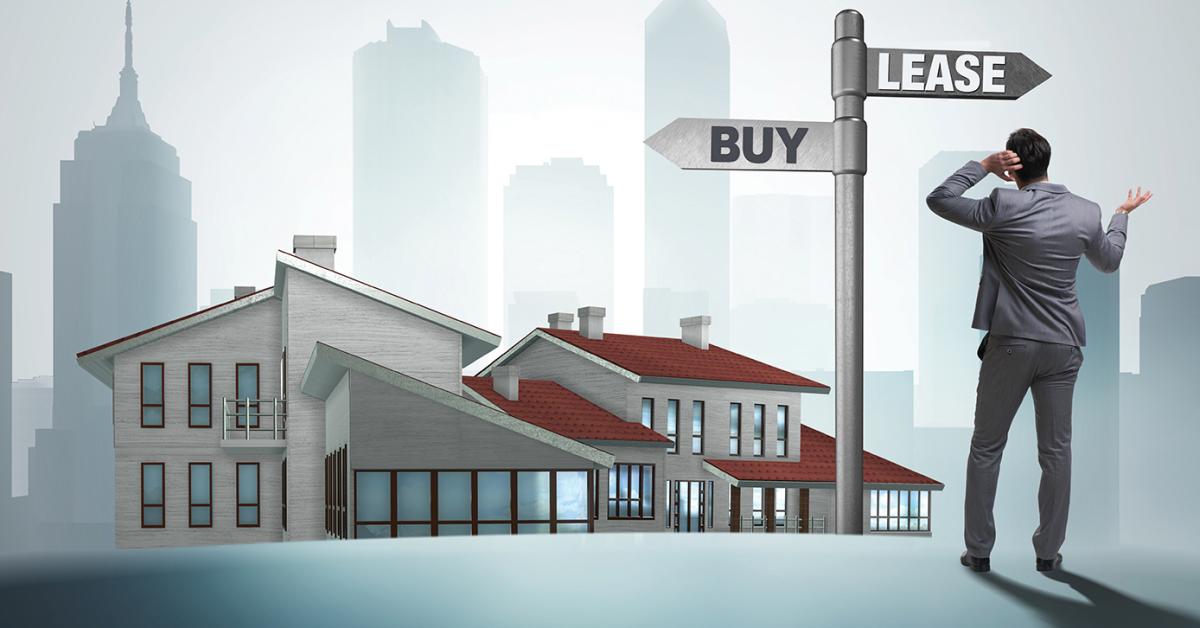CHICAGO — The landscape of dry cleaning has changed dramatically in recent years, with shifting consumer habits, rising costs and evolving business models. With all the decisions that go into starting or expanding a drycleaning company, there’s one choice that often comes before almost all others: whether to rent or buy the building that will contain the business.
The Buy vs. Lease Decision
For many operators, owning property is the preferred option whenever available because it offers a sense of stability for the company and increases the owner’s portfolio.
The answer to “buy or lease” is unequivocal for Wayne Wudyka, CEO of The Huntington Company, a Michigan-based business that includes Huntington Cleaners, Wesch Cleaners, Camelot Cleaners and the Certified Restoration Drycleaning Network (CRDN) franchise.
“When and where possible, I would always own my property without question,” he says. “In fact, we’ve passed on numerous opportunities because I could not buy the real estate with the operation. I’d rather not have a store where I don’t own the real estate under it.”
Wudyka cites two primary reasons for this stance. “First, it’s a wealth-building opportunity to acquire the real estate along the way. Secondly, and as important, when you go to sell your company, you effectively don’t own your business if you don’t own your real estate. When you try to sell, you’re not the only one negotiating with the buyer. You’ve got a landlord who’s going to require different terms and conditions from the incoming buyer.”
Robert Strong, president of Country Club Cleaners in California, owns four light-industrial buildings for his company’s restoration and production facilities, and leases his drop stores. He echoes Wudyka’s sentiment, drawing a simple parallel: “It’s just like Monopoly. You always win the game of Monopoly if you own the land.”
“From my point of view, it’s better to own than to rent,” says Andrew Rivkin, owner of New York’s Embassy Cleaners, “as this will provide an opportunity to build equity with every monthly payment that you make.
“This is particularly true in today’s uncertain economic environment, which includes instability in the stock market and other related markets. I believe it’s always a safer bet to invest in real estate, especially owner-operator real estate, because it is a tangible, physical asset, which tends to retain value over time better than other types of financial investments.”
Like Strong, Steve Rettler, owner of All Seasons Garment Care and Tailoring in Minneapolis, frames his approach based on facility type. He owns three commercial properties that focus on production, with two also containing laundromats, and owns a drop store. He has also bought two of his competitor’s facilities. He does, however, lease some of the drop stores under his company’s umbrella.
“I’ve always operated under the premise of, if it’s a production plant, we’re going to try to buy the real estate,” he says, “because of the capital costs that you’re going to have to incur to build out that plant. It’s a much bigger investment.”
Critical Location Factors
When considering a property, Wudyka identifies three key factors.
“First are your demographics — the household income in the area,” he says. “Is this a demographic that has an income level that would make them drycleaning customers in the first place? Second is competition in the area. How many competitors are there, and are they any good? Third is the growth in that area. Is this a growing area with housing starts and apartments going up? What’s the growth in the area look like?”
“Demographic is my No. 1 consideration when considering where we’re going to put a location,” Rettler agrees. “This is top of mind for me because drycleaning customers have higher income levels and we need to target those markets. We look at home values, household income and things like that because you obviously want to be going into a market where people need your services.”
For Rivkin, the physical building attributes of the property in question matter significantly: “Obviously, you want adequate size for not only your current needs but also your anticipated future needs so you could grow into the space. Secondly, look at the functional layout, including the size and shape of the rooms.”
He adds that ceiling height is an important factor for dry cleaners.
“You want to allow ceiling height that allows all of your equipment, such as conveyors, to fit,” Rivkin says. “If you think about it, typically, when you are purchasing or renting a building, you’re paying for the square footage — essentially the footprint — more so than you’re paying for the cubic footage of the building.
“If a 5,000-square-foot building has an 18-foot ceiling height, and the 10,000-square-foot building has only an 11-foot ceiling height, the 5,000-square-foot building could be much more useful.”
Come back Thursday for Part 2, where we’ll explore the balance between visibility and cost when finding a location, along with how perceived environmental concerns can impact landlord relations.
Have a question or comment? E-mail our editor Dave Davis at [email protected].



